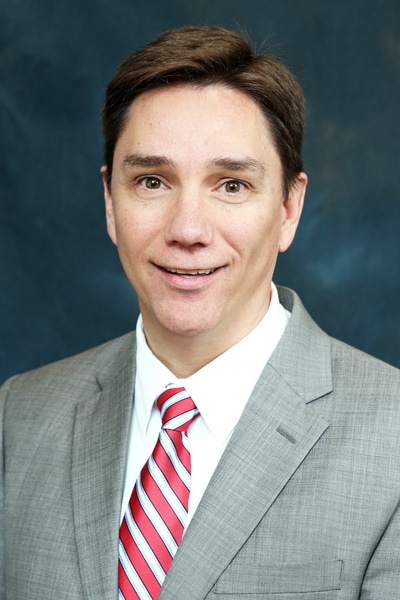
When you get thousands of hits on your blog, as Swope Health Services’ chief information officer and vice president of support services Brian Thomas regularly does, it’s safe to say that you’re seen as an authority on the subject matter. Thomas’s blog, which synthesizes everything that he has learned about the intersection of technology and healthcare over a twenty-year career, is a product of complete immersion in the industry.
That Thomas even has time to blog is remarkable, considering all the duties he has at Swope, which provides primary healthcare and behavioral health services to patients in the greater Kansas City area. Not only is he CIO, he also leads a support team that covers an enterprise project management office, facilities, purchasing, security, environmental services, and a call center as well. But the endeavors are symbiotic, and he finds them to be mutually enriching. “
It’s one thing to be an expert at what you do, but I found that to really take this to the next level, I had to constantly immerse myself in current trends in the technology space,” he says. “Although this takes some time, it’s definitely worth it.”
In addition to the blog, Thomas is a contributing writer for other professional organizations and websites. He sits on a number of boards and technology committees. He attends an array of events, and he speaks at many of them. Thomas says that the activity has allowed him to give back to young technology professionals, while branding himself at the same time.
At Swope, Thomas helms countless technology initiatives. The service desk is in a constant state of improvement, targeted as key to the customer experience. Customers can now request help via the company’s web portal, through e-mail or text message, or the time-tested method of a phone call. The company is always looking for ways to leverage artificial intelligence (AI) to handle simple tasks so employees can maximize their time at work.
“We want computers to be able to talk back to our customers for easy requests because then we can keep the tech staff involved in higher-thinking and critical, rather than mundane, tasks,” he explains.
Data mining has come to the fore as well. In 2016, the company decided to consolidate all of its data sources so it could glean the information in more meaningful ways. After shopping around for the right software, it settled on a visualization program called Tableau. What used to be a bottleneck for Swope’s report writer has loosened, freeing him up to focus on more technical and strategic projects. Not only did that improve report turnaround by 150 percent, it also ended up enhancing the customer experience, as all that data became accessible to them. Company leaders benefited as well.
“Providing real-time information to our leaders at all levels of the organization, we’re able to make more accurate short-term tactical and long-term strategic decisions,” Thomas says.
The most exciting initiative over the past couple of years, Thomas adds, has been establishing interoperability and data sharing among three health information centers. Kansas City sits on the Kansas-Missouri state line, each with its own Health Information Exchange (HIE). Previously, Swope was only able to get patients and share with healthcare organizations in Kansas, but connecting the HIEs will make for more efficient patient care, as they will be able to pull records from dozens of different hospitals and healthcare systems across state lines. “There is still a lot of work to be done from a technology standpoint to make this more efficient and accurate,” Thomas says. “However, everybody in the healthcare community has recognized this and we are making concerted efforts to help improve the platform and the process.”
Looking toward the future of the industry, Thomas says that AI is going to continue to enhance the customer experience as it develops and business leaders gain insight into its possibilities. “
We’re really starting to tap into it for cognitive computing and machine learning for the data we have to pull,” he says. “An electronic medical record has thousands of tables housed inside that database, so within that database structure, there are tens of thousands of fields, all with a relationship in the process. It gets tough for a human to go through and build reports for terabytes worth of data. And there’s a lot of movement in healthcare toward using AI for data mining and predictive analytics.”
Thomas says that he doesn’t see himself slowing down on the blogging or his involvement on committees and tech organizations. It keeps him alert and engaged and continues to improve his ability to contribute to everything going on at Swope, he says.
“I started my blog because I wanted to add more content to my professional website,” he says. “But as time went on, I recognized the importance of content, marketing, and being an expert in my field. I enjoy the blogging aspect, as it has been very fulfilling for me, but more importantly, it has gained attention and recognition from many sources and other professionals. I plan on continuing to blog and speak about leadership and technology for the foreseeable future.”
Editor’s note: At the time of publication, Brian Thomas was no longer with Swope Health Services.















